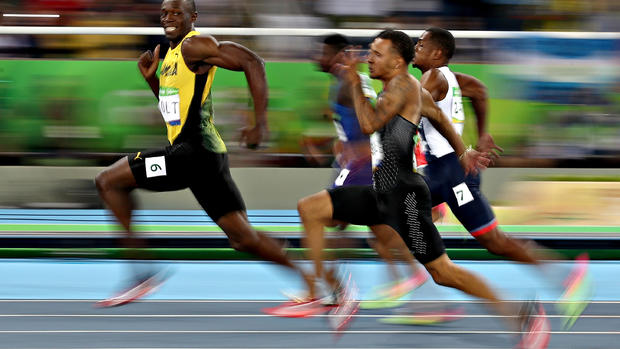This is why the Olympics pools turned green
One of the biggest questions asked during the first week of the 2016 summer Olympics in Rio was why did those pools turn green? Olympics watchers were shocked to find the once-pristine blue waters of the diving pool at the Maria Lenk Aquatic Center to turn a dark green hue on Aug. 9. Less than 24 hours, the pool used for water polo and synchronized swimming turned a similar shade.
Now, we have an official answer for the color shift -- human error that led to 160 liters of hydrogen peroxide being mistakenly dumped into the pools on Aug. 5, the New York Times reports. Olympics officials said that the hydrogen peroxide "neutralized" the chlorine in the pools, making way for the growth of "organic compounds" that possibly included algae.
It was an unsightly and somewhat embarrassing mistake for Olympics officials.
"Of course it's an embarrassment," Mario Andrada, a spokesman for the Rio Games, said at a press conference. "We are hosting the Olympic Games, and athletes are here, so water is going to be an issue. We should have been better in fixing it quickly. We learned painful lessons the hard way."
The Times reported that on Saturday, the diving pool was still a dark "bottle-green" color, and that, by contrast, the second pool started looking bluer again. Given that synchronized swimmers need to see one another below the water's surface, Olympics officials were quick to try to clear up the second pool. They decided to drain all 3,725,000 liters of water from the pool and replace it with the clear water from a practice pool.
So, who is to blame? Olympics officials did not want to blame a specific individually, but they did say that it looks like the hydrogen peroxide and been applied by a local pool maintenance worker.
Hydrogen peroxide is an appropriate pool-cleaning tool, but not when combined with chlorine, Gustavo Nascimiento, director of venue management for the Rio Olympics, said at the conference. Once athletes started using the pools, the neutralized chlorine powered the growth of the "organic compounds" that made the pools turn green.
"The electronic monitoring system that measures the amount of chlorine in the water was betrayed by this chemistry," Nascimento added.
The pools' monitors showed that there was the right amount of chlorine in the water, but they did not accurately pinpoint when the chlorine was no longer working.
